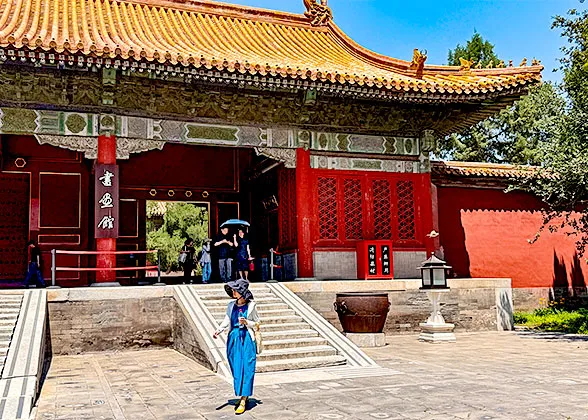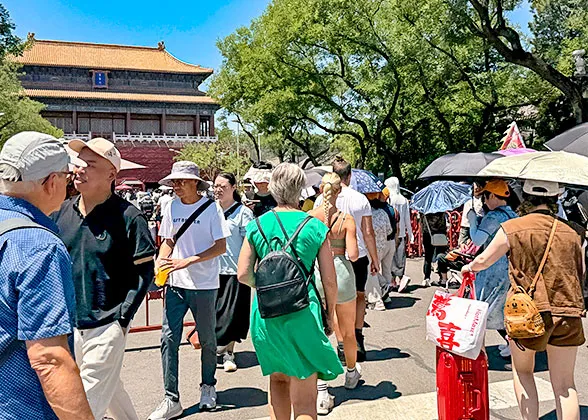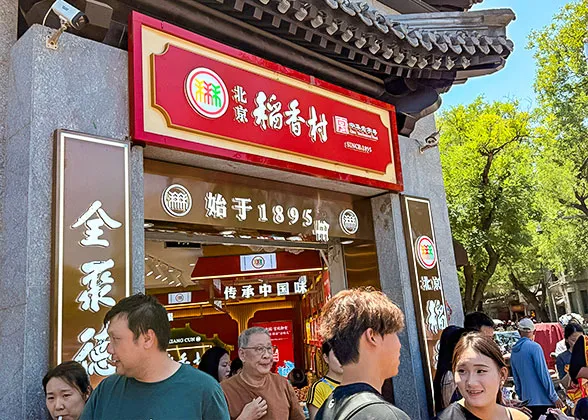East Prosperity Gate (Donghuamen)
The East Prosperity Gate, the eastern gate of the Forbidden City, was once used by officials. Today, it serves as one of the two main exits with convenient transportation and various dining options.
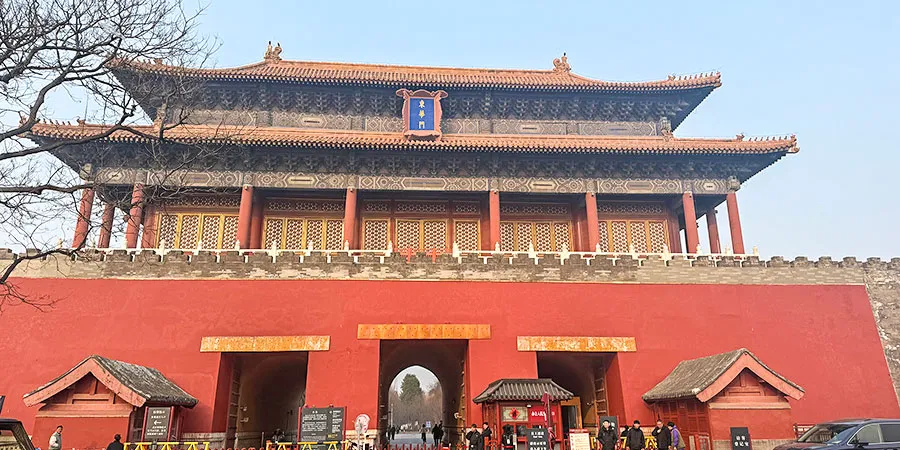 |
| East Prosperity Gate, Forbidden City |
When & Why Built – East Prosperity Gate History
Constructed in 1420, the East Prosperity Gate was the primary entrance for officials entering the Forbidden City before the Qing Dynasty's fall in 1911. The crown prince also frequently used it due to its proximity to his residence. Notably, the coffins of emperors, empresses, and the empress dowager (the emperor's mother) were carried through this gate. The emperors themselves rarely used this gate.
What Does the East Prosperity Gate Look Like?
Facing east, the gate boasts two levels. The rectangular lower level, sitting on a white marble base, features three arched passageways, which are now exits for visitors. Above it stands a double-eaved tower with glazed yellow tiles, adorned with intricate paintings and a plaque inscribed the gate’s name. Two dismounting steles are flanking the East Prosperity Gate, once used to remind passersby to proceed on foot as a sign of respect for imperial authority.
Positionally, the Eastern and Western Prosperity Gates of the Forbidden City are closer to the outer court, where state affairs were conducted. This layout was both practical for officials’ use and in line with the regulation that kept the front court's governmental matters separate from the inner court's private life.
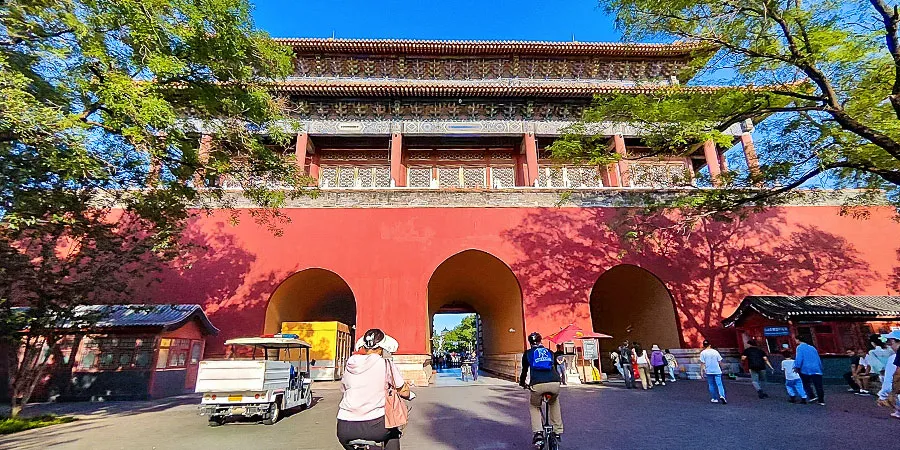 |
| East Prosperity Gate, Forbidden City |
The Gate's Most Distinctive Feature: 72 Door Nails
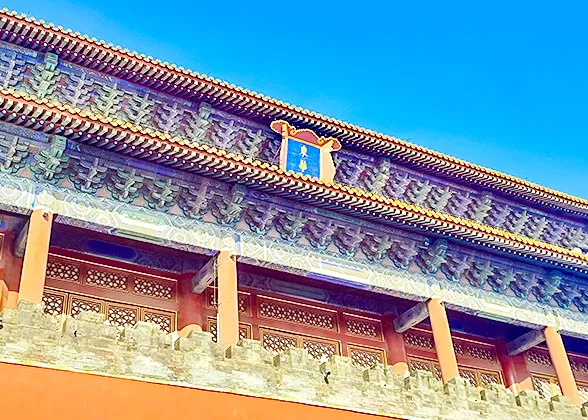 |
| A Close View to the Gate |
One theory suggests that since the East Prosperity Gate was mainly used by officials and the crown prince, who held lower status than the emperor, it could not have the same number of nails as the gates used by emperors.
Another speculation is that because imperial coffins exited through this gate and the last Ming emperor left through here to commit suicide, the gate is associated with yin (negative) energy in Chinese culture, hence the use of the even-numbered nails with yin energy.
A third explanation is that the East Prosperity Gate, located in the east (wood element), could counteract the central palace of the emperor (earth element), so reducing the nails to 72 was a way to neutralize this conflict.
Exiting the Forbidden City: Three Reasons to Choose East Prosperity Gate
When planning your departure from the Forbidden City, you'll have two exit options: the East Prosperity Gate or the Gate of Divine Prowess. If any of the following situations apply to you, the East Prosperity Gate is the smarter choice:
Your Tour Ends Near the East Prosperity Gate
If you finish exploring near the eastern side, such as after visiting the Treasure Gallery or Clock Gallery, the East Prosperity Gate is just a 10-minute walk away. If you're wrapping up at the Calligraphy and Painting Gallery in the Hall of Literary Glory, you can reach the exit in under 3 minutes.
|
|
You Want a Quick Bite After Your Visit
The East Gate is the best exit for dining. Just 5 minutes east, you'll find a food street serving authentic Beijing dishes such as roast duck, meat pies, and stewed tripe. Be aware that between 16:30 and 18:00, this area gets crowded, so expect some queues during peak dining hours.
|
|
You're Heading to Tiananmen Square or Wangfujing
For visitors continuing to Tiananmen Square, a 14-minute walk south from the East Gate will get you there. Alternatively, if you're off to Wangfujing shopping street, hop on Subway Line 8 at Jinyu Hutong Station or Line 1 at Tiananmen East Station, reachable in about 20 minutes.
Other Practical Travel Tips for East Prosperity Gate
Shortcut to Forbidden City's Entrance
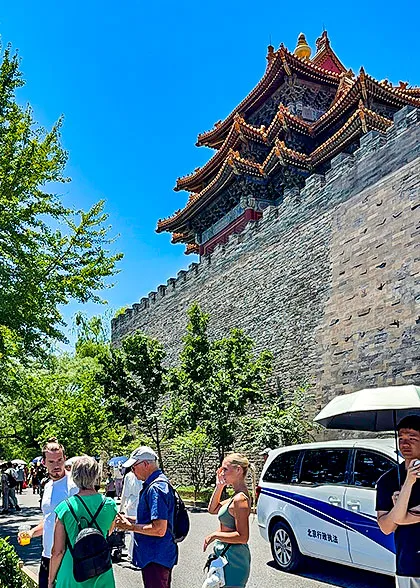 |
| Way from the Gate to the Entrance |
Most tourists arrive at Forbidden City's entrance after passing through Tiananmen Square. However, if you plan to skip Tiananmen Square or visit it after the palace, you can avoid the crowds and long security checks by taking a quicker route to access the entrance through the East Prosperity Gate:
Take the subway Line 8 to Jinyu Hutong and exit from C, walking 10 minutes along Dong'anmen Street. Alternatively, exit from Line 1 Tiananmen East Station B and walk north for 15 minutes. Buses or taxis can also drop you nearby for a short walk. After reaching the East Prosperity Gate, turn left and walk along the moat for about 10 minutes to reach the Meridian Gate, and then que for the security check to enter the Forbidden City.
A Perfect Photography Spot at East Prosperity Gate
The East Prosperity Gate, only 2-minute-walk to the southeast Corner Tower and the moat, offers picturesque opportunities. For the classic shot, head to the south side of Donghuamen Street to capture the Corner Tower reflected in the green water. For portraits, you can pose by the white marble railings with the ornate eaves in the background.
Additionally, from mid-October to mid-November, the ginkgo trees outside the East Prosperity Gate turn golden, stunningly contrasting with the gate’s red walls and yellow tiles, perfect for photography.
- Last updated on Dec. 11, 2025 by Jally Zhang -
